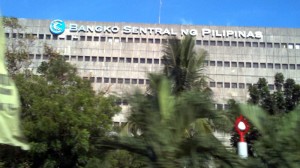PH seen posting balance of payments deficit
Projections for the country’s transactions with the rest of the world have been revised, given weaker-than-expected investment inflows and the clogging at Manila’s ports that slowed down the importation of goods.
Governor Amando M. Tetangco Jr. yesterday said although recurring sources of dollar inflows would hold steady for the most part, investments were a significant drag to the nation’s overall balance-of-payments (BOP).
The Philippines faces a full-year BOP deficit for the first time in a decade. The last full-year deficit was seen in 2004.
“The dominant factors affecting the BOP are external in nature, specifically the normalization of monetary policy in the United States,” Tetangco told reporters.
He was referring to the gradual reductions in and recent halt of the US Federal Reserve’s monthly asset purchases. Interest rates have been on the rise due to the end of these asset purchases, which had previously flooded financial markets with freshly-printed cash.
As a result, cash that flowed to emerging markets since the Fed program have started to reverse, returning to advanced markets like the United States.
Article continues after this advertisementThe country’s BOP position is a summary of all its transactions with the rest of the world.
Article continues after this advertisementFor 2014, the BSP now sees the Philippines posting a deficit of $3.4 billion, compared to the previous forecast of a surplus of $1.1 billion.
“This is mainly due to developments in the capital account,” Tetangco said.
Latest data from the BSP showed that at the end of October, the country posted net outflows of foreign portfolio investments totaling $1.1 billion, compared to the $3.6 billion surplus posted in the same 10-month period last year.
Tetangco said the likely deficit was more a sign of turbulence abroad than weakness in the Philippine economy.
